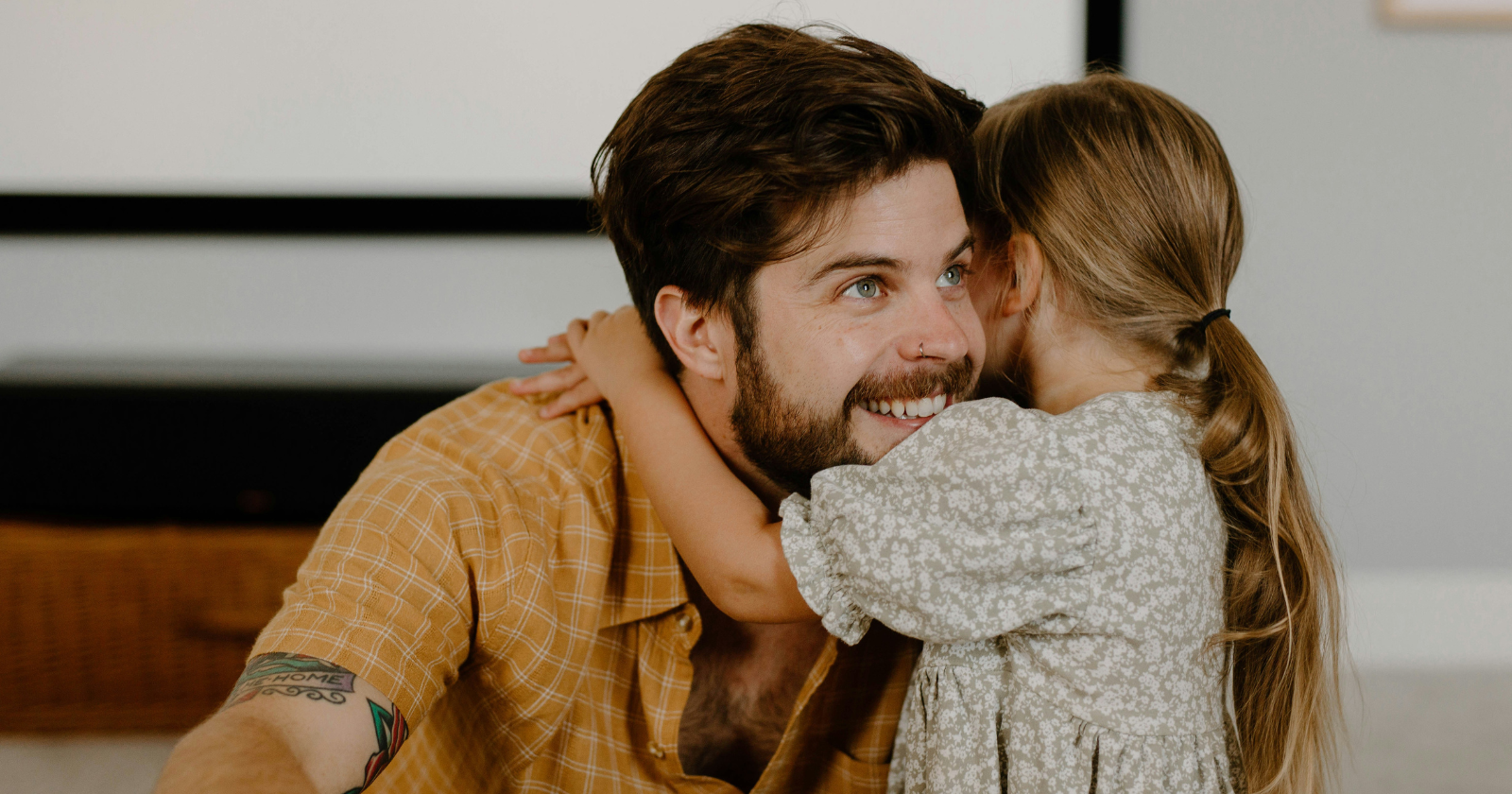Let’s be honest: a lot of us were raised on a script where Dad “helped” and Mom carried the rest.
That script is being rewritten in real time at my house.
I work full-time on site with one WFH day a week; my wife, Camille, works full-time too.
We’ve got Elise (4) and Julien (14 months), and our home runs on calendars, check-ins, and an endless loop of snacks. Somewhere in the middle of nap schedules and the preschool drop-off lane, it hit me—this is not my dad’s or my granddad’s version of fatherhood.
Here are seven moments that drove that home—and the practical habits that keep our team steady.
1. The day the pediatrician looked at me for the details
At Julien’s four-month visit, the pediatrician asked, “How many ounces is he taking now? Any changes to daytime naps?”
She looked straight at me. Not as a courtesy—out of expectation.
I didn’t do the awkward “Uh, let me ask Mom” dance. I knew because I’d logged the feeds and naps that morning, and I’m the nap whisperer at our place.
That small shift in eye contact felt huge. In my childhood, doctors’ offices were a mom domain.
Dads showed up for big shots and big scares; moms knew the daily data. Now, I keep the shared notes up to date, I can read hunger vs. overtired cries, and I’m the one humming a low sway at 2 p.m. so the contact-napper can reset.
Practical tip: keep a simple shared log—just a notes app or a shared doc. Track meds, naps, feeds, and new foods. It’s not “mom knowledge.” It’s household knowledge.
Related Stories from The Artful Parent
When both parents carry it, neither drowns in it.
2. The first time the daycare teacher texted me, not “the mom”
Elise had a theme-day mix-up—wear blue for Oceans Week. The teacher texted both of us in the family group thread, and I handled it.
No forward, no “Can you take this?” Just me tossing a blue tee into her backpack and replying, “All set, thanks!”
Old script: school messages default to Mom. New reality: we split school runs and DM threads. On my WFH day, I’m morning drop-off, lunchbox lead, and art-drying-rack monitor.
On Camille’s days, she takes pickup, bath duty, and the costume emails that always arrive at 8:17 p.m. We swap on the fly because the work is visible and shared.
What helps: Sunday “ops huddle.” Ten minutes after the kids are down, we skim the week—pickups, dinner plan, who’s on bath/book, what forms are due.
- The art of being unbothered: 9 habits of people who never let others affect their mood - Global English Editing
- I retired at 62 and went back to work at 64 – here’s why retirement isn’t for everyone - Global English Editing
- If difficult people become soft around you, you possess these 7 rare qualities - Global English Editing
We each claim, we don’t “help.” It’s a micro-ritual that keeps resentment from simmering.
3. The evening I realized the mental load isn’t a color-coded calendar—it’s a conversation
I used to think if I made the perfect family calendar, I’d “solve” the mental load. Spoiler: the calendar is just a tool. The real shift is the conversation it enables.
Here’s how ours goes. Every Thursday night we do a quick division-of-labor check-in: “What felt heavy this week? What do we need to rebalance?” Sometimes the answer is practical (I’ll handle daycare forms; you take dentist appointments).
Sometimes it’s emotional (I’m touched out; can you do bedtime solo while I take a walk?). That rhythm—naming the load, not just scheduling it—keeps us teamed up.
It’s also where repair happens. If I dropped the ball, I say it. If Camille overfunctioned, she says it. As Brené Brown puts it, “Clear is kind. Unclear is unkind.”
We try to be clear about what we need before we get brittle.
4. The afternoon I strapped on a baby carrier… and felt the street stare (in a good way)
I wore Julien to the corner bakery on my chest, a bag of produce in one hand and a latte in the other. Two different people told me, “I love seeing dads babywear.”
It felt normal to me, but the reaction reminded me this isn’t universal yet.
When my dad carried me, it was on his shoulders after church. He showed love in play and protection; he didn’t have a carrier, a burp cloth, or the diaper-change speed run I can do with one wipe.
Today, hands-on doesn’t just mean weekend fun. It’s bath temperature, nap windows, sunscreen application, and knowing where the spare pacifier lives.
What makes babywearing magic: free hands + regulated baby. Julien settles fastest with that steady sway and low hum. I can unload the dishwasher, narrate what I’m doing (“Now we’re stacking the bowls”), and he melts into calm.
It’s caregiving and connection at once.
5. The morning I saw the house as a system, not a chore list
Our home used to feel like a game of whack-a-mole: dishes pop up, laundry pops up, a permission slip pops up. Then we built micro-systems. Nothing fancy—just enough to cut decision fatigue.
-
Batch-cook on Sundays (two mains, one grain, a tray of roasted veg).
-
Pack backpacks by the door each night (Elise’s scooter helmet lives on the hook above).
-
Refill the diaper caddy on Friday—wipes, cream, zip sleepers.
-
Default duties by day: on my WFH day, I own drop-off and dinner; on late-meeting days for Camille, she owns bedtime and I reset the kitchen.
It’s not that systems make the work disappear. They make the invisible visible, and the repeatable repeatable. The boomer-era vibe was often “Mom runs the house, Dad steps in when asked.”
Our vibe is the opposite—if you live here, you run here.
Data backs the shift. Fathers today spend far more time on childcare and housework than in the 1960s; the numbers aren’t perfect, but the trend line is clear (see Pew Research Center’s overview).
We’re not congratulating ourselves for basic competence; we’re embracing baseline shared responsibility.
6. The night I learned to lead with warmth, not volume
Julien went full meltdown at 1:40 a.m.—back-arched, red-faced, inconsolable. My first instinct used to be to “fix it fast,” which for me sounded like shushing too loud and rushing the process.
That never worked. Now I start with co-regulation: slow breaths, a warm hand on his back, the same low hum I use in daylight.
Then I set boundaries calmly. With Elise, that sounds like: “I hear you want one more story. We’re done for tonight. We can pick a new one in the morning.” No lectures, no threats, just firm and kind. If she spirals, I ride it out near her, predictable and steady.
This is where the old model really shows its seams. Yelling might win the moment, but it loses connection. A line I love from Gretchen Rubin floats through my head: “The days are long, but the years are short.”
I don’t want my kids to remember a house that solved every problem with volume. I want them to remember warmth with structure.
What helps: a tiny “repair ritual.” If bedtime went sideways, I circle back the next day: “Last night felt rough. I’m sorry I rushed you. Next time I’ll give a heads-up before ‘last page.’ Want to practice now?” Repair teaches them that relationships bend and rebound.
7. The Saturday when “helping” became “owning”
I used to ask, “What can I do?” Now I say, “I’m on baths and lunches this weekend; you take laundry and sports signups?” It seems small. It’s not. Ownership means anticipating, executing, and closing the loop—without running it through your partner’s mental RAM.
That shift unlocks something else: respect for each other’s professional time. Camille’s got a big Monday presentation? I load the front end of the weekend—grocery run, meal prep, backpack reset—so her Sunday evening is quiet.
My on-site days are long? She leans into the early school pickup so I can hit the commute without the “you’re late” domino effect.
And because we own lanes, we can trade them. When one of us is under water, the other can step in without a briefing because the system is shared, not proprietary.
So what does “modern fatherhood” feel like from the inside?
It feels like an active verb. Like noticing the tiny clues (the cranky-rub-eyes that means “nap me now”), and the big ones (the brittle tone that means your partner needs you to take the wheel tonight).
It feels like trusting rituals more than willpower—because tired parents don’t rise to the occasion; we fall to the level of our systems.
It also feels creative.
Elise is a storytime-and-scooter kid who thrives on predictability, so we use “first/then” scripts and let her pick between two good choices. Julien is a spirited contact-napper, so we design the day around realistic windows: outside movement after breakfast, a nap reset during lunch prep, stroller walk before dinner.
That flexibility—without chaos—isn’t fancy parenting theory. It’s the ordinary craft of knowing your kids.
And it’s tender. The boomer-era ideal often celebrated stoicism: provider first, nurturer if convenient. The model we’re building says nurturance is part of provision.
Emotional literacy isn’t extra credit; it’s the daily homework of making home feel safe. When I mess up (and I do), I apologize, I repair, I try again. When Camille has a day, I run the evening; when it’s my day, she runs it.
Love looks like warm dishes, clean lunchboxes, and two adults choosing each other on repeat.
The three habits that keep us steady
-
Own specific lanes, then review them. Our lanes change by season (soccer vs. swim, daycare vs. preschool). We review monthly: What’s working? What’s friction? If something is always late (forms, I’m looking at you), we change who owns it or we build a trigger (Sunday night backpack reset).
-
Use short rituals to lower the temperature. Five-minute morning huddle; ten-minute Thursday check-in; Friday diaper-caddy restock. Rituals reduce re-negotiation and give us early warning before resentment builds. As the Pew trend suggests, many of us are already doing more—rituals help us do it smoother.
-
Be clear, then be kind. We ask for what we need and say how we’ll deliver. That Brené Brown line—“Clear is kind. Unclear is unkind.”—earns its spot on our fridge. Clarity is how we protect each other’s time and our kids’ sense of stability.
A quiet goodbye to the old script
I still carry a ton of gratitude for my dad and granddad. They did what they knew in the world they lived in. But our world is different—workplaces, childcare norms, school expectations, even the text threads that run our lives.
The shift isn’t about dunking on the past. It’s about matching the present with better tools.
So here’s my invitation: pick one small moment to flip this week. Maybe you reply to the class message without forwarding it. Maybe you do bedtime with your phone in a drawer. Maybe you take the pediatrician’s lead and answer the nap question without looking over your shoulder. Tiny moves, big payoff.
Because this new version of fatherhood isn’t a performance; it’s a practice. And practice—done daily, done together—turns a house into a steady place to grow up.
On the longest days, I remind myself of Gretchen Rubin’s line and breathe into the moment I’m actually living: warm bath water, damp curls on a forehead, a baby finally asleep on my chest. The years are short.
And if we keep showing up—with systems, clarity, and softness—we’ll look back and see a family built by two fully present parents, side by side.



